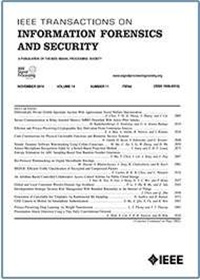SAMamba:以太坊欺诈检测的结构感知Mamba
IF 8
1区 计算机科学
Q1 COMPUTER SCIENCE, THEORY & METHODS
IEEE Transactions on Information Forensics and Security
Pub Date : 2025-07-14
DOI:10.1109/TIFS.2025.3589015
引用次数: 0
摘要
以太坊的假名性为犯罪活动提供了保护伞,允许犯罪分子在不受监管的地区发展网络钓鱼诈骗等一系列黑色产业。为了利用关系归纳偏差来发现匿名账户的真实身份,图神经网络(gnn)作为一种有效而强大的框架被广泛应用于以太坊欺诈检测任务中。然而,GNN的1跳消息传递机制的表达能力受到Weisfeiler-Leman (1-WL)测试的限制,降低了以太坊网络上的欺诈检测性能。本文提出了一个结构感知的Mamba框架,命名为SAMamba。具体来说,SAMamba使用子图编码策略来捕获复杂的结构模式,并引入Mamba的特殊序列建模功能来路由全局信息。为了从密集信息中过滤任务相关信息,分别从局部和全局角度引入了注意机制和选择机制。这些量身定制的设计使SAMamba能够区分结构模式中的细微差异,并有选择地聚合面向任务的信息,从而在欺诈检测任务中表现出卓越的性能。对真实以太坊数据的广泛实验表明,SAMamba优于最先进的方法。代码可以在Github上公开获得:https://github.com/deepang-ai/SAMamba本文章由计算机程序翻译,如有差异,请以英文原文为准。
SAMamba: Structure-Aware Mamba for Ethereum Fraud Detection
The pseudonymity nature of Ethereum provides a protective umbrella for criminal activities, allowing criminals to develop a series of black industries such as phishing scams in unregulated areas. In order to exploit the relational inductive bias to discover the real identity of anonymous accounts, graph neural networks (GNNs) have been widely used in Ethereum fraud detection tasks as an effective and powerful framework. However, the expressive power of GNN’s 1-hop message passing mechanism is bounded by the Weisfeiler-Leman (1-WL) test, degrading the fraud detection performance on the Ethereum network. This paper proposes a structure-aware Mamba framework, named SAMamba. Specifically, SAMamba uses a subgraph encoding strategy to capture complex structural patterns and introduces Mamba’s exceptional sequence modeling capabilities to route global information. In order to filter task-relevant information from dense information, the attention mechanism and the selection mechanism are introduced from local and global perspectives, respectively. These tailor-made designs enable SAMamba to distinguish subtle differences in structural patterns and selectively aggregate task-oriented information, thereby demonstrating exceptional performance in fraud detection tasks. Extensive experiments on real-world Ethereum data demonstrate that SAMamba outperforms state-of-the-art methods. The codes are publicly available on Github: https://github.com/deepang-ai/SAMamba
求助全文
通过发布文献求助,成功后即可免费获取论文全文。
去求助
来源期刊

IEEE Transactions on Information Forensics and Security
工程技术-工程:电子与电气
CiteScore
14.40
自引率
7.40%
发文量
234
审稿时长
6.5 months
期刊介绍:
The IEEE Transactions on Information Forensics and Security covers the sciences, technologies, and applications relating to information forensics, information security, biometrics, surveillance and systems applications that incorporate these features
 求助内容:
求助内容: 应助结果提醒方式:
应助结果提醒方式:


